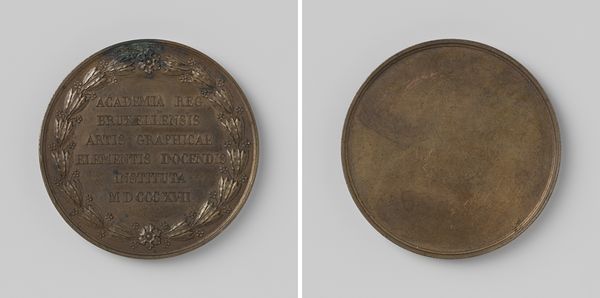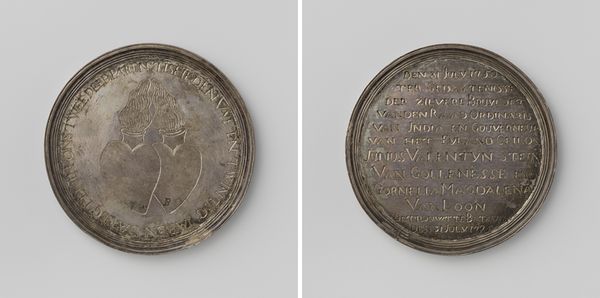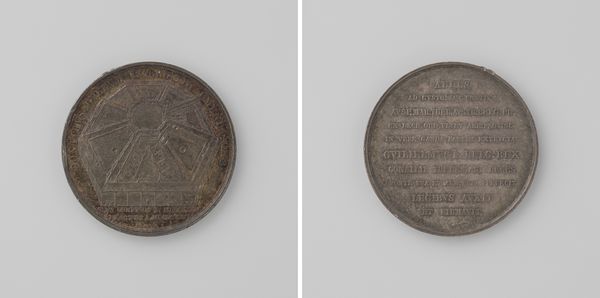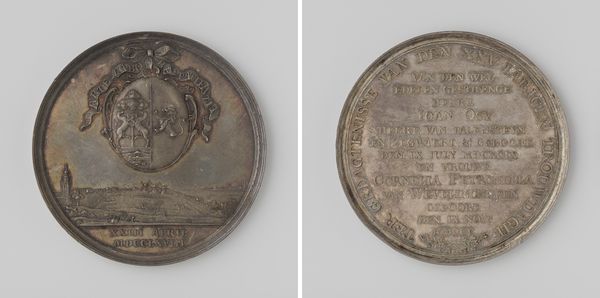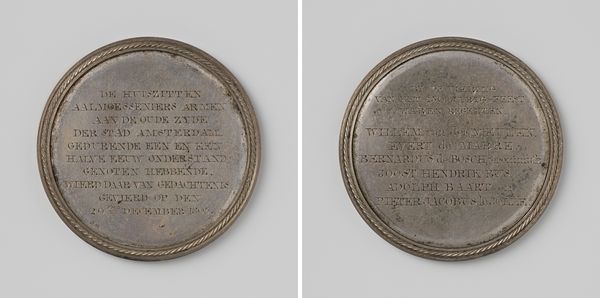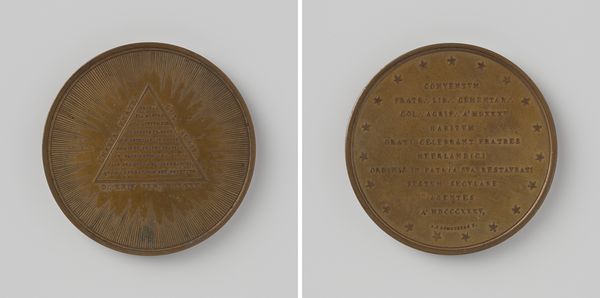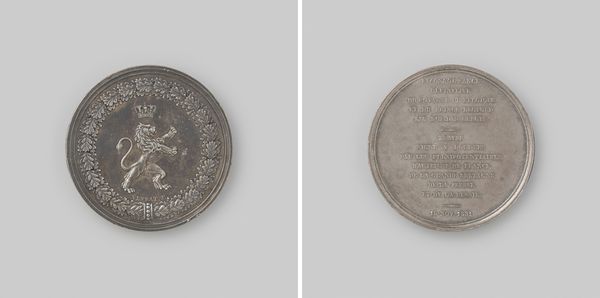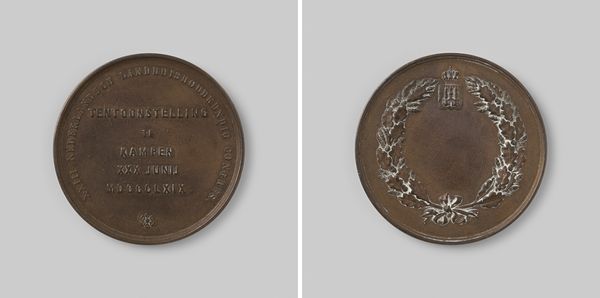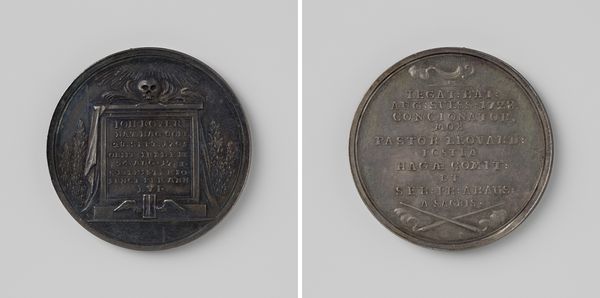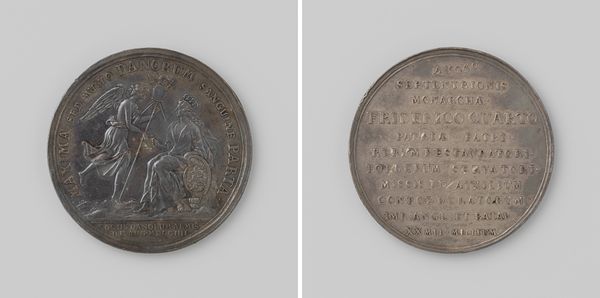
J.H. Docters van Leeuwen, vijftig jaar hoofdingenieur titulair van Waterstaat, penning aangeboden door dijkgraven en hoogheemraden van Alblasserwaard en Vijfheerenlanden 1859
0:00
0:00
metal, bronze, sculpture
#
portrait
#
metal
#
bronze
#
sculpture
#
history-painting
#
academic-art
Dimensions: diameter 4.1 cm, weight 36.72 gr
Copyright: Rijks Museum: Open Domain
Curator: Let’s take a closer look at this bronze medal, created in 1859. The inscription commemorates J.H. Docters van Leeuwen, on his fiftieth year as titular chief engineer of Waterstaat. Editor: It's rather austere, isn't it? A solid, respectable object. I imagine it felt weighty and important in the hand, a tangible symbol of years of service. Did it hang on a ribbon? Curator: Possibly, but I suspect this was more for holding in the hand, a sort of celebratory handshake made material. What interests me is how medals like this represent civic engineering labor. The means of producing this honor involved a whole support system. Editor: That's interesting, the system supporting the system! You make me think of the river network Docters van Leeuwen oversaw, that unseen system vital to society, memorialized here in this one piece. I bet its recipient felt so incredibly proud. Curator: And materially recognized. There’s a circular inscription on one side enclosed by a laurel wreath, celebrating him in relation to the board members and bailiffs of Alblasserwaard and Vijfheerenlanden. His identity as part of an organization is key here. Editor: It speaks of his contribution to the common good in a visual language that probably felt really impactful to him and his contemporaries, although maybe a bit formal for today. Still, something deeply satisfying in honoring service so directly. I'd certainly feel valued. Curator: Yes, these kinds of objects highlight the role of individuals within specific labor relations, and show us how even what appears like a personal achievement is dependent on others’ work. This kind of collective action deserves recognition. Editor: So, a small metal disc opens a window into 19th-century civil engineering practices and notions of labor value. Who knew a medal could speak so eloquently? Curator: Exactly! I think it’s important to examine this type of object not only for historical merit, but to contextualize contemporary labor conditions, which still often hinge upon those same types of relationships of production.
Comments
No comments
Be the first to comment and join the conversation on the ultimate creative platform.

